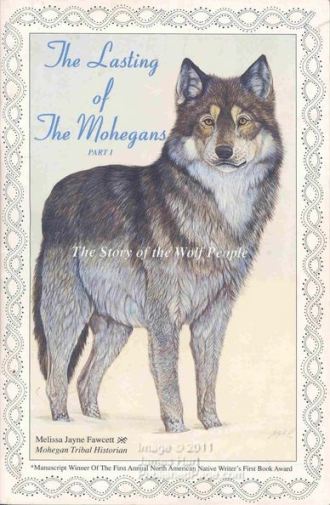By Melissa Tantaquidgeon Zobel
The Mohegans first petitioned for federal acknowledgement in 1978. In a 1989 “Proposed Finding,” the Tribe was denied federal status due to insufficient evidence regarding tribal social and political activities during the 1940s and 1950s. The system of Mohegan female sociocultural authority, prevalent during that time frame, had escaped the notice of government researchers who had limited their focus to male leadership.
The Tribe submitted more interpretive evidence in 1989 and the Federal Government conducted a Field Review of the Tribe in November 1993. Then on March 7, 1994, Mohegan Federal Recognition was approved in a “Final Determination” by the Assistant Secretary of the Interior for Indian Affairs, Ada Elizabeth Deer of the Menominee Nation. Acknowledgement by Ms. Deer was poignant; since, she had successfully led her own Tribe’s fight for Federal Recognition after their termination by the Federal Government in the 1950s.
Mohegan Tribal Chief, G’tinemong/Ralph W. Sturges, delivered the following words at the Tribe’s March 20, 1994, Federal Recognition Party at Ocean Beach’s Port and Starboard in New London:
We are no longer the little old tribe that lives upon the hill. We are now the Nation that lives upon the hill.
On May 15, 1994, sixty days after the publication of Mohegan Federal Recognition in the Federal Register, the Mohegans legally received the benefits and privileges of Federal status. That day, Mohegans celebrated independence and sovereignty with a picnic at Fort Shantok. The public joined in the festivities that included fireworks choreographed to “Last of the Mohicans,” “Dances with Wolves,” and “This Land is Your Land.”
New Agreements
Following “Mohegan Recognition,” “Memorandums of Understanding” (or “Compacts”) were signed by the Mohegans and Mashantucket Pequot Tribes with the State of Connecticut. In their accord, the Mohegan Tribe agreed to terminate their ancient land claim suit. In that lawsuit, the State was cited for violating the 1790 Trade and Intercourse Act. As recompense, the State acknowledged the Tribe’s right to build a Destination Resort and pursue long-term economic development.
The Mohegans formally ended their land case in October of 1994 when their Federal Settlement Act was approved by the United States Congress and President Bill Clinton. In return for extinguishing their land claim, the Tribe received neither monetary compensation nor land. Rather, the Mohegans merely accepted the State’s acknowledgement of their right to pursue the economic development of their choice on their traditional reservation. These are the words of Governor Lowell P. Weicker Jr., Chairman Richard “Skip” Hayward, and Chief Ralph W. Sturges at that historic signing:
Both these tribes have gone through a long detailed, precise process that clearly proves the legitimacy of their claims to land here in the state of Connecticut … I don’t think there is one of us as American citizens that isn’t proud to go ahead and rectify the mistakes of history. That has now been done.
—Governor Lowell P. Weicker, State of Connecticut
The Pequots and the Mohegans have a long history together, and I believe at one time were one people . .. It’s wonderful again to come together as one people.
—Chairman Richard “Skip” Hayward, Mashantucket Pequot Tribal Nation
The main objective is that we all have some peace in this state.
—Chief Ralph W. Sturges, Mohegan Nation
Mohegan Today
People: Current enrollment of the Mohegan Tribe is 2,200 individuals, most of whom reside in Connecticut. The tribal constitution confers membership upon those who trace their ancestry to the 1861 tribal roll and who have remained involved in tribal activities. The Mohegan rolls are now closed to all but descendants. Due to our close interaction with the English and others, our people look like a cross section of America. Mohegans come in all colors, engage in all types of occupations, and live in various types of homes. Mohegans are bound together not merely by race but by lineage, heritage, nationhood and the story trails of Oral Tradition.
Government: The Mohegans are governed (according to their Tribal Constitution) by a Lifetime Chief and Medicine Woman, a nine member Tribal Council (which serves as the Legislative Body), and a seven member Council of Elders (which functions as the Constitutional Review Board). The Tribe, as a whole, holds quarterly meetings and governing bodies meet more frequently.
The Chief: To become a Mohegan Chief, a tribal member must garner the support of the tribal community through proven leadership and then be appointed by the Council of Elders.
The Medicine Person: To become a Mohegan Medicine Person, a tribal member must be trained and well versed in tribal customs and then be appointed by the Council of Elders.
Economy: Federal Recognition has allowed the Mohegans to pursue self-determination and tribal economic development. The United States’ Bureau of Indian Affairs encourages all tribes to support themselves and not to rely on federal monies. Tribal Nonner (Respected Grandmother) Loretta Roberge described the Mohegan attitude towards this goal of tribal self-sustainability as follows:
I visualize that the tribe will be self-sufficient and able to provide education and employment opportunities to all … and that we will be as we have been in the past, now and in the future—a friend to all.
Mohegan Medicine Woman and Tribal Historian Melissa Tantaquidgeon Zobel holds an MA in history from the University of Connecticut Connecticut and an MFA in Creative Writing from Fairfield University; she has authored several books, including Medicine Trail: The Life and Lessons of Gladys Tantaquidgeon (University of Arizona Press, 2000) and Oracles: A Novel (University of New Mexico Press, 2004).
This article is excerpted from her book The Lasting of the Mohegans, Part I: The Story of the Wolf People (Uncasville: The Mohegan Tribe, 1992), which won the inaugural First Book Award from the Native Writers’ Circle of the Americas.









